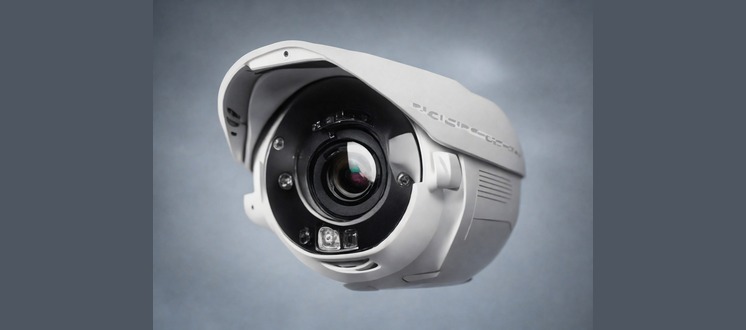
CCTV Buying Guide: How to Choose the Perfect CCTV for Your Needs
In today's world, CCTV cameras have become an essential tool for ensuring security and peace of mind - both at home and in business. With a plethora of options available, choosing the right CCTV camera system can be overwhelming. Fear not, as this comprehensive guide aims to simplify the process and help you make an informed decision.
Identifying Your Needs
Home Security: Protect your home and family from intruders and burglaries. Monitor entry points, such as doors and windows, as well as outdoor areas like driveways and gardens.
- Identify vulnerable entry points such as doors, windows and garages that require monitoring.
- Consider outdoor cameras with weatherproofing and night vision capabilities for perimeter security.
- Indoor cameras can be strategically placed in common areas, hallways, and staircases for comprehensive coverage.
Baby Care: Keep an eye on your baby's nursery or play area to ensure their safety and well-being. Opt for cameras with features like two-way audio and temperature monitoring for added peace of mind.
- Choose cameras with features like pan-tilt-zoom (PTZ) functionality to keep a close eye on your baby's crib or play area.
- Look for cameras with temperature sensors to ensure the room remains comfortable for your baby.
- Two-way audio allows you to soothe your baby or communicate with caregivers remotely.
Pet Care: Monitor your pets while you're away to ensure they're safe and comfortable. Choose cameras with motion detection and pet-specific features.
- Install cameras in areas where your pets spend the most time, such as living rooms, pet beds, or backyard play areas.
- Motion-activated cameras can alert you to any unusual activity or behavior from your pets.
Business Surveillance: Safeguard your business premises from theft, vandalism, or unauthorised access. Install cameras in key areas such as cash registers, storage rooms, and parking lots to deter criminal activity.
- Conduct a thorough risk assessment to identify critical areas that require surveillance, such as cash registers, inventory rooms, or parking lots.
- Consider cameras with advanced analytics capabilities for retail stores, such as people counting or facial recognition for identifying frequent customers or potential shoplifters.
- High-resolution cameras with wide dynamic range (WDR) are essential for capturing clear images in challenging lighting conditions, such as bright sunlight or low-light environments.
Remote Monitoring: Monitor your property remotely via smartphone or computer. Look for cameras with mobile app support and cloud storage options for convenient access to live footage and recordings.
- Opt for cameras with remote access capabilities, allowing you to view live footage and recordings from anywhere via a smartphone app or web browser.
- Cloud storage options provide secure storage for video recordings, ensuring you can access footage even if the camera is tampered with or stolen.
- Look for cameras with motion detection alerts, which notify you of any suspicious activity in real-time, enabling prompt action.
Location Considerations
Indoor vs Outdoor: Determine whether you need cameras for indoor monitoring, outdoor surveillance, or both. Outdoor cameras require weatherproofing and robust construction to withstand harsh environmental conditions.
Day vs Night Surveillance: For areas with low light or night-time surveillance requirements, choose cameras with infrared (IR) night vision capabilities for clear imaging in darkness.
Covered Areas: Identify blind spots or areas with limited visibility that may require additional cameras or strategic placement for comprehensive coverage.
Indoor vs Outdoor: Consider accessibility for installation and maintenance purposes, especially for outdoor cameras mounted at elevated positions or in hard-to-reach areas.
Power and Connectivity: Ensure sufficient power sources and connectivity options for your cameras, whether it's wired (Ethernet) or wireless (Wi-Fi) connections. Outdoor cameras may require additional power sources such as PoE (Power over Ethernet) or solar panels.
Knowing Key CCTV Specifications
Camera Resolution: Higher resolution cameras provide clearer images. Options typically range from standard definition (SD) to high definition (HD), with 1080p and 4K being common benchmarks.
Camera Type: Choose between analog, IP (Internet Protocol), or wireless cameras. Analog cameras are traditional and cost-effective, while IP cameras offer higher resolution and advanced features. Wireless cameras provide flexibility in installation but may require a stable Wi-Fi connection.
Field of View (FOV): Determine the coverage area needed. Cameras with wider FOV capture more space, reducing the number of cameras required for surveillance - this is especially true for businesses.
Night Vision: If surveillance is required during low-light conditions, opt for cameras with infrared (IR) night vision capabilities. Look for cameras with sufficient IR range for clear imaging in darkness.
Weatherproofing: For outdoor surveillance, ensure cameras are weatherproof to withstand various environmental conditions such as rain, dust, and extreme temperatures.
Storage: Choose between local storage (onboard SD card) or cloud storage for video recordings. Consider the required storage capacity based on the number of cameras and recording duration.
Installation and Setup
One very important point that is missed out during CCTV comparisons is the availability of various installation and setup options.
DIY vs Professional Installation: Decide whether to install the CCTV system yourself or hire professional installers. Do it yourself (DIY) installation offers cost savings but requires technical expertise. Professional installation ensures proper setup and configuration.
Placement: Strategically place cameras to cover vulnerable areas and entry points. Consider factors such as height, angle, and obstructions for optimal coverage.
Connectivity: Ensure seamless connectivity between cameras, DVR/NVR (Digital Video Recorder/Network Video Recorder), and monitoring devices. Test the system thoroughly after installation to ensure functionality.
In conclusion, choosing the right CCTV camera system involves understanding your requirements, considering various location aspects as well as key specification and ensuring proper installation. By following this guide, you can make an informed decision and enhance the security of your premises.
Happy Shopping and stay secure!
